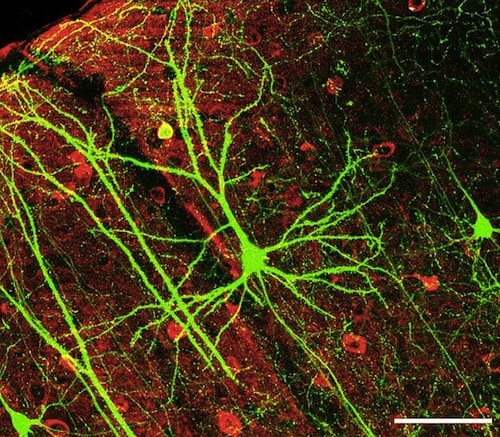 Intelligent Design
Intelligent Design
Project Brain: Our Prediction

You often hear people compare the brain to a computer. After all, much like a computer, our brain seems to store information and regulate functions behind the scenes. Even outside the materialist camp, we habitually liken the brain to “hardware” and the mind is “software.” Throughout history, in fact, people have compared the brain to whatever the latest technology happened to be. At the time, each such analogy seemed apt, but as technology evolves, so does our understanding of the brain.
Scientists have now completed a 10-year project in which they dissected a human brain. This tedious project studied layers at half-of-a-hair thickness, totaling 7,400 slices, and analyzed over 1 trillion bytes of data. The data were compiled into a catalog called “Big Brain,” offering a detailed look at the structure and density of this most enigmatic organ. It is the beginnings of a more extensive project to compile data from more brain samples. See the report in Nature:
Big Brain is part of the Human Brain Project, a 10-year, 1-billion European initiative to create a supercomputer simulation of the human brain. Detailed knowledge of neuronal clustering could help to set realistic parameters for the simulation, says lead author Katrin Amunts, a neuroscientist at the Heinrich Heine University Dusseldorf in Germany.
The goal of the Human Brain Project is to provide the most detailed simulation ever of the complexity of human brain. The computing power for this will require super-computers thousands of times more powerful than what we have available today. So an aim of the larger research initiative is to develop computers with that kind of power.
The Big Brain project in Europe and the related BRAIN Initiative in the United States have been compared to the Human Genome Project, in that all three have sought to achieve a better understanding of diseases, especially age-related ones like Alzheimer’s. It’s not so easy though. A NOVA special likened the genome to the parts list of a 747 airplane. Just because we have a list of parts does not mean we know what any given part does or how they work together.
The ENCODE project has shown us that the genome is far more complex than we previously imagined. Its regulatory and replication systems interact as a complicated, coherent whole, flying in the face of reductionist assumptions.
Similarly, studying the brain in ultra-thin slices and tracing every neuron will likely show us that we have only scratched the surface. Take, for example, an article in Scientific American discussing the function of glia.
Within the brain are small globules, known as neuroglia, which literally means “brain glue.” These globules were thought to be insignificant clusters used to hold the neurons together. When glial cells were first identified, there was so much focus on the function of neurons that scientists paid little attention to the glia. As it turns out, glial cells play a significant role in brain activity.
In the last five years, scientists have discovered that glial cells play a role in signaling sleepiness during the day, sparking seizures, regulating blood flow to the brain, and fixing damaged neurons. Mice studies indicate that glia may have something to do with intelligence and self-repair of the brain. Furthermore, most of these studies looked at one type of glial cell, called astrocytes. There are several other types of glia that may play important roles in brain activity.
One of those, oligodendrocyte cells, demonstrates complex behavior. The Scientific American article introduces us to Dwight Bergles of John Hopkins University and his work with oligodendrocyte progenitor cells. The production of these cells is tightly controlled, indicating a complex regulatory system. Apparently they also function in a complex, non-random manner:
Oligodendrocyte progenitor cells, on the other hand, are constantly on the move; reorienting their processes, traveling throughout the surrounding tissue, dividing, dying and differentiating. But these cells aren’t just jostling around at random; they’re coordinating a delicate dance of complex interactions.
Our prediction? Simply this. Much as in the case of the human genome, the study of the physical makeup of the brain will provide remarkable insight into its components and structure. However it will also unlock layers upon layers of complexity. In uncovering the mysteries behind neuroactivity and brain-based diseases, we will find that the brain is far too integrated and functionally complex to be a product of Darwinian evolution. Instead, it will be shown to display the hallmarks of intelligent design.
